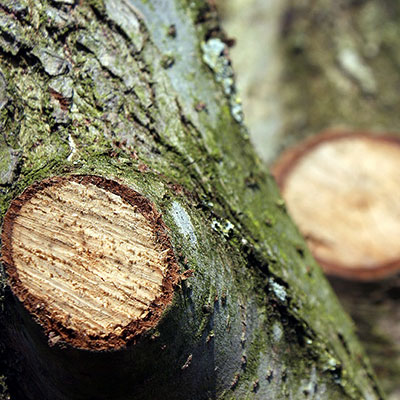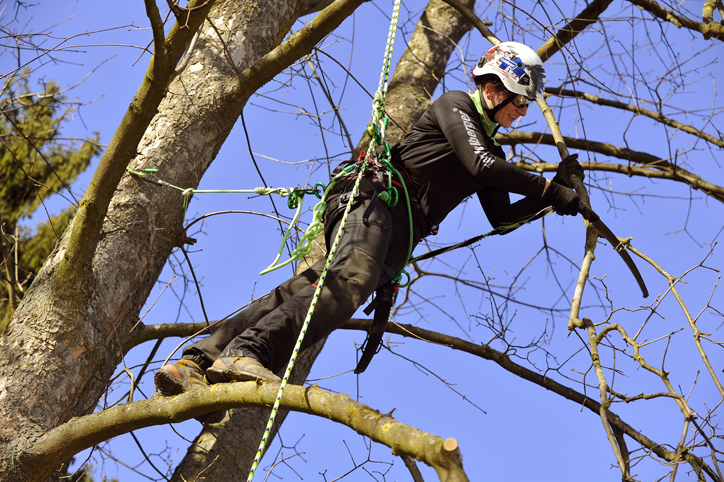
Understanding Arboriculture: Pruning
Why do Arborists Prune Trees?
Trees need regular pruning for a number of reasons. These include allowing more air to circulate while encouraging more balanced development; to manage the tree’s height; or to remove branches that are endangering people or property. Additionally, pruning may be necessary to remove diseased or damaged branches, or for shaping the tree’s growth in a particular way.
Arborists are sometimes called upon to remove dangerous or unwanted trees but they are also involved in the maintenance and conservation of healthy trees. If a branch, for example, weakens or become diseased, it is better to remove it than to let it fall or cause other problems. Effective pruning will also improve the appearance of your tree, and get rid of weak or erratic growth. Bad pruning can traumatise the tree and potentially lead to rot. Branches can also cross, and pruning is essential to stop them rubbing against each other.
When to Prune Trees
This depends on the tree, and should take place at the appropriate time in the species’ growth cycle. An arborist will know that a beech or a maple tree should be pruned in the autumn, while a plum or cherry tree should be attended to following its flowering. Autumn or winter, the dormant season, is less stressful for many trees. If however the tree is damaged or diseased, pruning may need to take place immediately.

How to Prune Trees
A professional arborist will always start with a plan. One important principle is to remove the affected branch with the least impact on the trunk of the tree. Branches grow from nodes on the tree, and incisions should be made on the branch side. There is a small swelling where the branch and tree join – this is called the collar and is where large cuts should be made as it is where the tree heals most readily.
There are various common practices in pruning, such as pollarding, where some deciduous species are cut back to pollards, or a gnarly knob, from which new growth will emerge. Considered an extreme form of pruning, this is done to contain growth and promote a shady canopy.
- Crown lifting entails removing the lower branches to a certain height. This distance is generally a third of the tree’s overall height. This is often done where access is needed for vehicles or pedestrians, or to allow more light to reach the tree’s base or surrounding area.
- Crown thinning is usually undertaken to limit the height and span of a tree by eliminating branches. It increases light penetration, and can improve the crop of a fruit tree. The focus is often on removing dead shoots. Done badly, this could spoil the tree’s appearance.
- In formative or directional pruning, the tree is shaped and made structurally sound by removing appropriate branches.
- General pruning in the dormant phase often means making the side branches shorter, which allows more light in and makes the tree less susceptible to wind or storm damage.
Some trees are protected by law, so you need to be aware as to whether there is a Tree Preservation Order (TPO) on it before arranging to have any work undertaken. An adviser from the local council should be able to provide information on this.

Tools of the Trade
The professional tree surgeon relies upon a number of specialist arborist tools, some of which are listed here:
- Chainsaws are used for cutting through thick branches that would take far too long to cut through manually.
- Pole saws as pictured above – also known as long reach saws – for accessing very high or difficult to reach branches from the ground. These can be either telescopic or made up of individual interlocking poles, and can be fitted with either a saw head, or a hook for moving small branches or hangers out the way, or a lopper head operated by a cord.
- Pruning saws are precision cutting instruments useful for more delicate pruning work and making small wedges or drop crotch cuts to remove branches by protecting the main trunk of the tree.
- Loppers are powerful shears with long handles, perfect for chopping through smaller branches up to 2 inches in diameter, depending on the loppers. The long handles give extra leverage and the arborist may have more than one pair for tackling different jobs. There are two types of loppers – bypass loppers that operate like scissors, in that one blade slides past the other to cut, usually used for green (live) wood; and anvil loppers that work as one sharp blade cuts against another flat surface. Anvil loppers are used for dead wood.
Dealing with large trees will often require climbing, skilled use of chainsaws, specialist equipment such as cherry pickers, and the removal of weighty branches. Making mistakes could cause serious accidents or significant damage to property. Tree pruning is a specialist job, and should always be conducted by a trained arborist or tree surgeon.
